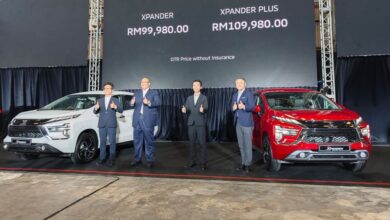The 2025 Volvo XC90 isn’t exactly brand new, but builds on an already amazing luxury SUV – Auto News
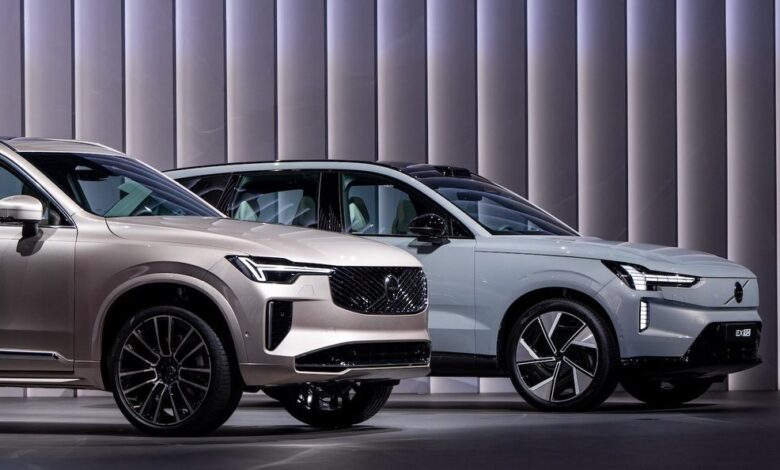
The second-generation Volvo XC90 is now receiving a substantial makeover – was it overdue? Although it still sits on the same Scalable Product Architecture (SPA) platform and retains the core body structure, Volvo has made significant strides to update both to its design and tech.
In terms of design, the XC90’s original sharp Swedish aesthetics made waves when it was first introduced a decade ago. We might argue that it has aged extremey gracefully. This sophisticated look helped the SUV become a global success. However, after ten years, familiarity has slightly dulled its edge; something this newer design aims to revive.
Clearly, most of the visual changes happen at the front, borrowing cues from Volvo’s electric siblings, EX30 and the EX90 that it appeared with alongside on stage with Volvo CEO Jim Rowan. The front fascia gets thoroughly modern update without being overly futuristic.
Along its front grille, Volvo has kept the Iron Mark logo and diagonal chrome bar, but added a criss-cross slat pattern that might not be to everyone’s taste. The bumper now features a wider central air intake and slimmer vertical corner inlets, giving the XC90 a sleeker yet aggressive look.

The vertical taillights, a visual hallmark of the XC90, are carried over, albeit with smoked internals while a range of new alloy wheels, from 20 inches to massive 22-inch options, are added to its repertoire.
Inside, the XC90 offers more up yet more changes that do not depart too far from the outgoing car’s design ethos. While the dashboard layout might seem familiar with its vertical air vents, chunky volume knob, and signature Orrefors crystal gear selector, Volvo has made thoughtful updates in the name of practicality.
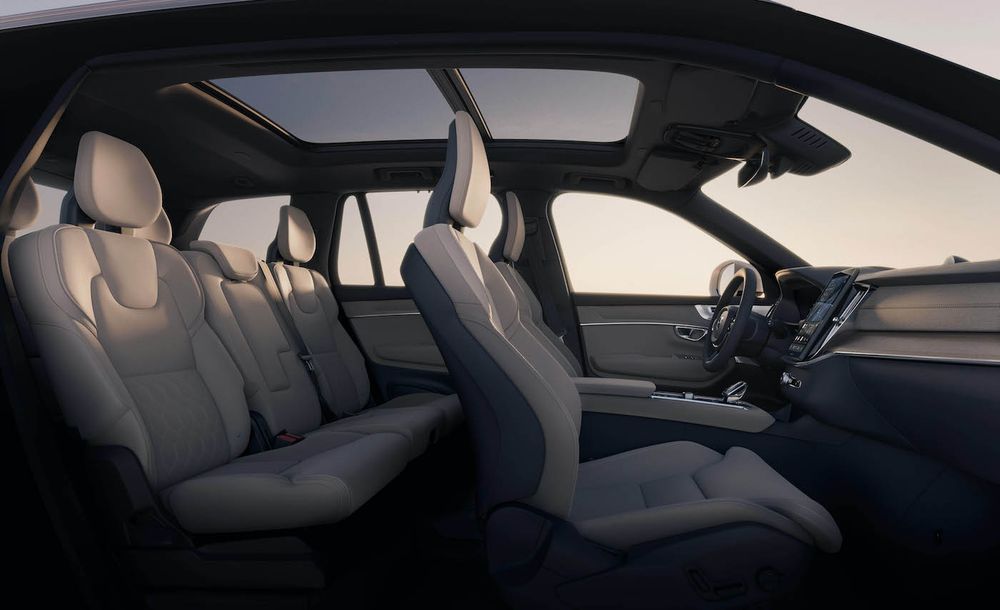
Seating can extend to 7 occupants, as before, but what’s new are smaller, customer-driven adjustments and enhancements. For example, the addition of a third cupholder in the center console and the repositioning of the Qi wireless charger make it easier to access without disrupting storage space. Elsewhere, some of its decorative trim are now made from recycled materials while ambient lighting has also been upgraded, adding a touch of luxury to night drives.
One of the most exciting interior upgrades is the new infotainment system. The XC90 now boasts a larger 11.2-inch portrait touchscreen, which takes center stage on the dash, tilted and sitting slightly outward from the dashboard to improve visibility and reachability to the driver.
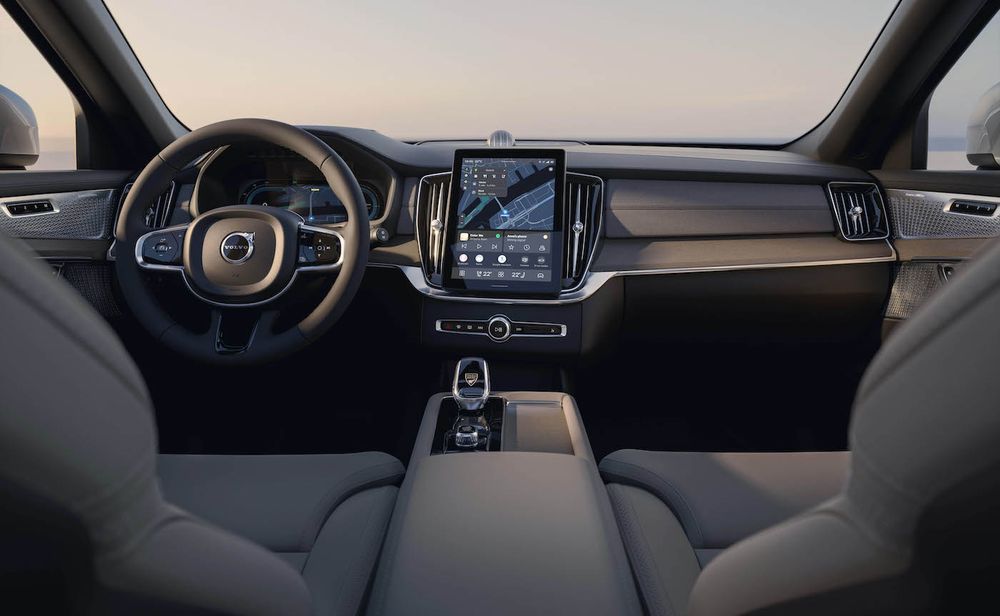
This display offers 21% higher pixel density and is powered by Volvo’s latest user interface, featuring embedded Google Maps integration and permanently accessible phone and media controls.
While the XC90’s exterior and interior have seen significant updates, the powertrain options remain largely the same, albeit with minor tweaks. The plug-in hybrid XC90 T8 AWD continues to be a popular choice, especially in markets like Malaysia, retaining the combination of a 2.0-liter turbocharged four-cylinder petrol engine paired with a 145 PS electric motor and an 8-speed automatic gearbox.

Curiously, the internal combustion engine has been slightly detuned (by 10 PS), now producing 310 PS and 400 Nm of torque. Despite this, the total system output is still an impressive 455 PS, enough to shoot this 2.3-ton SUV from zero to 100 km/h in just 5.4 seconds.
The PHEV’s battery capacity remains unchanged at 18.8 kWh, offering a modest electric-only range of up to 71 kilometers, falling short of chief rivals like the BMW X5 xDrive50e, which can travel up to 110 km on electric power alone.
For those who don’t need or prefer the hybrid option, Volvo still offers two mild-hybrid versions, the B5 and B6, both utilizing a 2.0-liter engine. The B5 generates 250 PS and 360 Nm, while the B6 bumps the power up to 299 PS, with both options delivering a refined and capable driving experience.
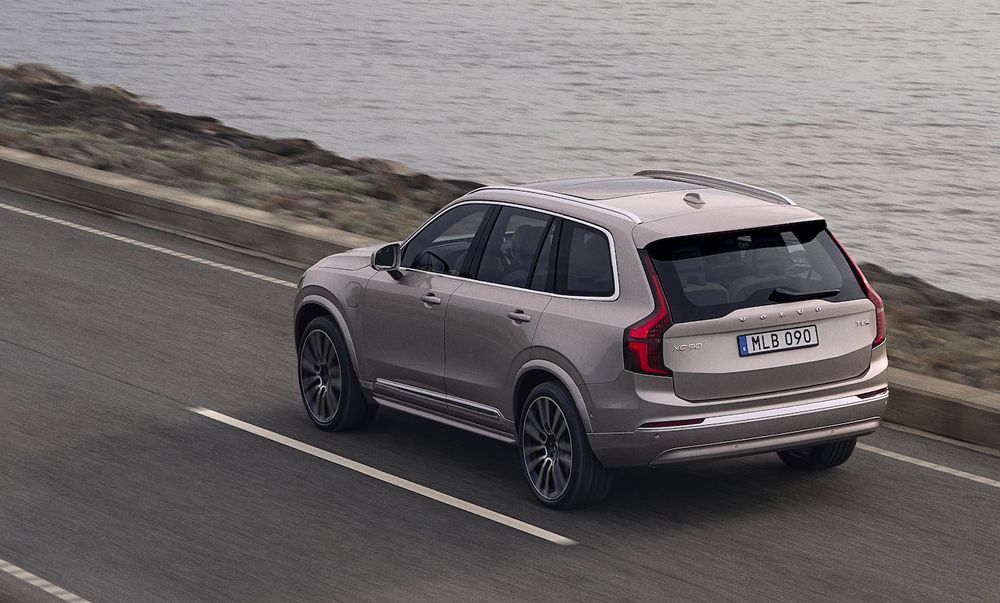
Volvo has also focused on improving the XC90’s ride comfort with new dampers that adapt mechanically to changing road conditions, improving ride quality on various terrains. Adaptive air suspension remains an optional upgrade, though.
In true Volvo fashion, the XC90 is packed with safety features. Autonomous emergency braking, pedestrian and cyclist detection, semi-autonomous driving with Pilot Assist, and blind-spot monitoring are just a few of the advanced systems that come as standard. Some markets will also benefit from vehicle-to-X (V2X) communication, adding another layer of safety and connectivity.
With production set to begin soon, the new Volvo XC90 promises to be a strong contender in the luxury SUV market. While it retains much of the core essence that made its predecessor such a success, the updated design, improved technology, and subtle mechanical refinements make this a worthy candidate to carry the baton.

The original outing of the second-generation Volvo XC90 was characterised by a distinct lack of major downsides, but time will tell if this comprehensive facelift is enough to keep the competition at bay. We’ll bring you more as it makes its way closer to a Malaysian launch.



